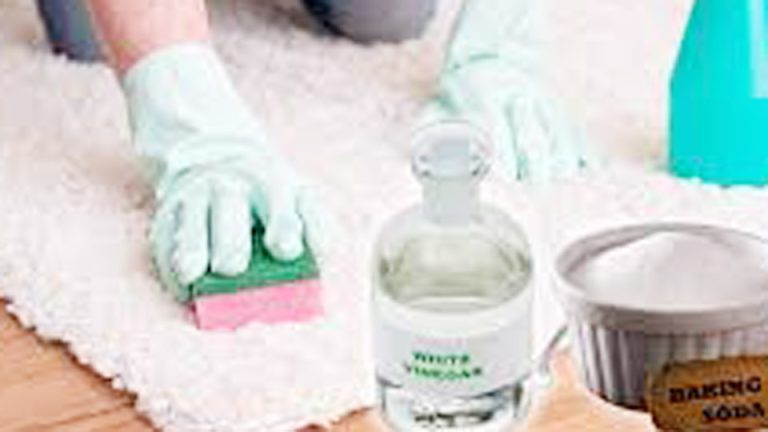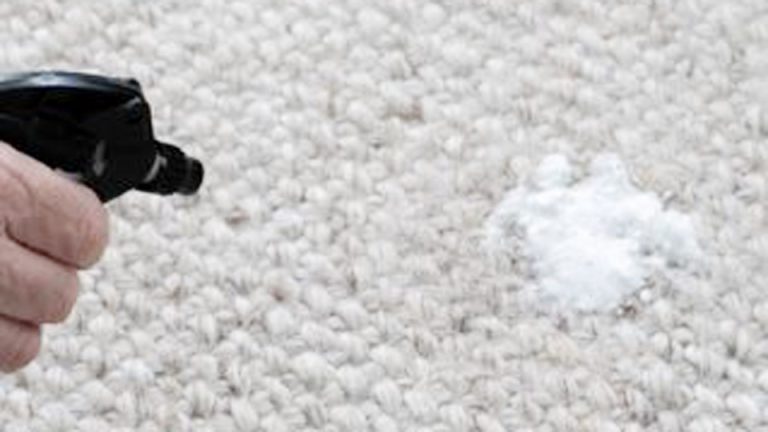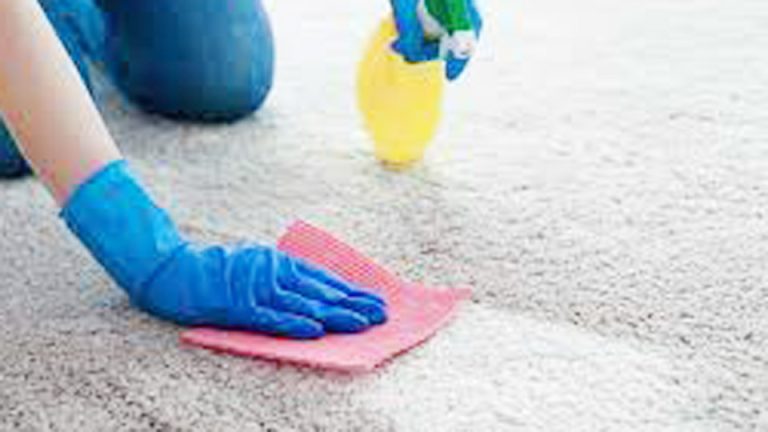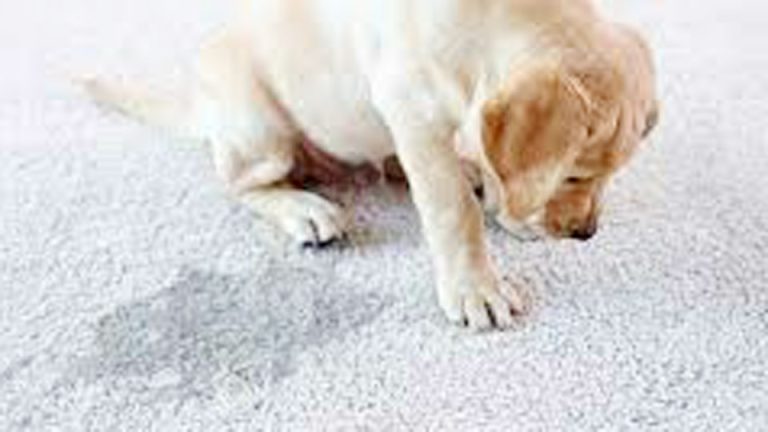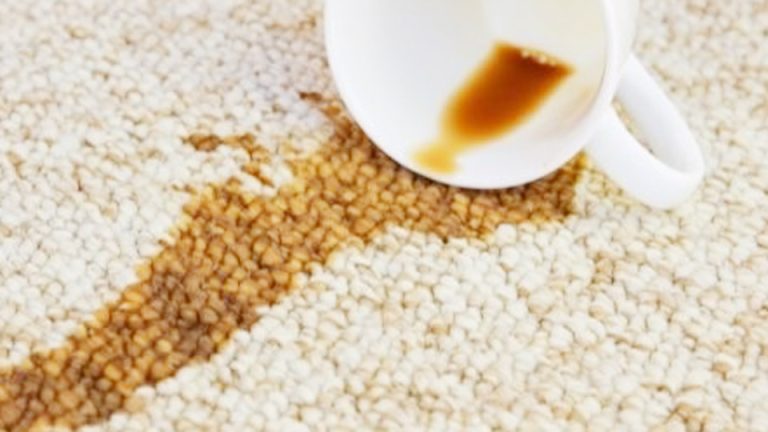I know how frustrating it can be to keep carpets looking and smelling fresh. Between muddy paw prints from my golden retriever, Max, coffee spills from early mornings, and the general wear and tear of family life, my carpets have taken a beating. That’s why I turned to how to clean carpet with baking soda and hydrogen peroxide—a natural, budget-friendly method that’s saved my carpets time and again.
I discovered this duo’s magic when a juice spill threatened to ruin my living room carpet, and it worked wonders. I’ll share my step-by-step process, personal tips, and real-life stories to help you revive your carpets, whether you’re a busy mom juggling kids or a professional keeping a tidy home office.
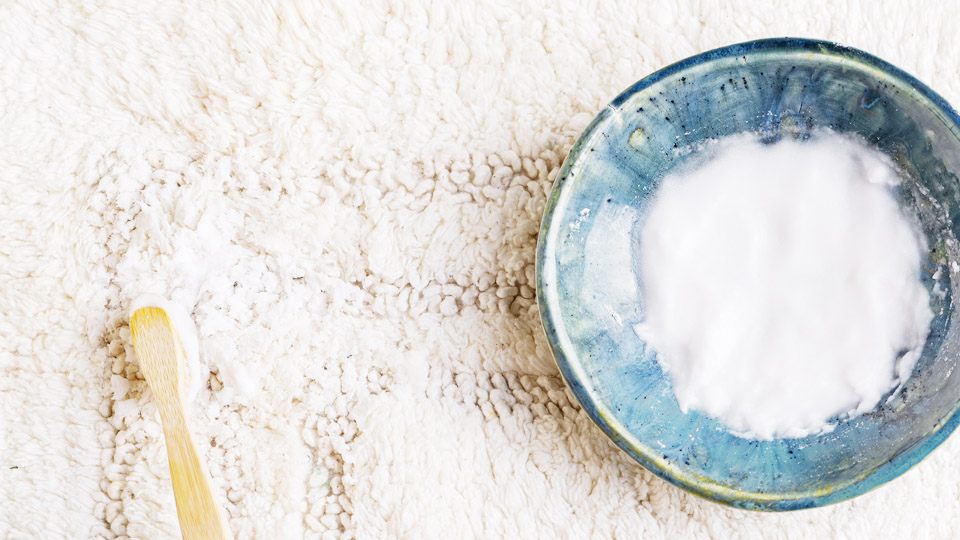
Image by thespruce
Why Baking Soda and Hydrogen Peroxide Are My Go-To Cleaners
I’ve always loved using natural ingredients for cleaning because they’re safe, affordable, and just as effective as store-bought products. Baking soda is a superstar at absorbing odors and lifting stains, while hydrogen peroxide (the 3% kind you find in pharmacies) is a mild disinfectant and whitener that tackles tough spots.
They’re perfect for carpets, which trap dirt, pet dander, and smells like nobody’s business. I once used this combo to erase a pet accident from my hallway carpet, and the results were so impressive, I’ve never looked back.
Plus, they’re gentle enough for homes with kids or pets, which is a must for me. Let’s explore how to use these ingredients to bring your carpets back to life.
Understanding Your Carpet’s Needs
Before we start cleaning, let’s talk about carpets. I’ve cleaned synthetic carpets in my living room and delicate wool blends in my bedroom, and each type needs a slightly different approach. Synthetic carpets, like polyester or nylon, are durable and handle moisture well. Wool or natural fiber carpets are more sensitive and can be damaged by too much water or harsh scrubbing.
I learned this when I over-soaked a wool carpet and ended up with a musty smell that took days to fade. Always check your carpet’s care label or test a small, hidden area first, like under a sofa, to ensure your cleaning method won’t cause damage. Knowing your carpet’s material is key to keeping it looking great.
Gathering Your Cleaning Supplies
To clean a carpet with baking soda and hydrogen peroxide, you’ll need a few simple tools. I keep these in my cleaning caddy for quick access when Max tracks mud or I spill my tea. Here’s what I use:
- Baking soda: Absorbs odors and lifts stains.
- 3% hydrogen peroxide: Disinfects and whitens stains.
- Warm water: Helps dissolve dirt without harming carpets.
- Liquid dish soap (optional): Boosts cleaning for greasy stains.
- Spray bottle: For applying hydrogen peroxide or water evenly.
- Soft-bristle brush: For gentle scrubbing.
- Microfiber cloths: For blotting and wiping.
- Vacuum cleaner: To remove loose dirt and baking soda.
- Bucket: For mixing solutions or soaking cloths.
- Dry towels: To absorb excess moisture.
- Fan (optional): To speed up drying.
These items are budget-friendly and likely already in your home, making this a no-brainer for carpet cleaning.
Step-by-Step Guide to Cleaning a Carpet with Baking Soda and Hydrogen Peroxide
This method works for most carpets and tackles stains, odors, and general grime. I used it to revive my dining room carpet after a dinner party left it with wine and food stains. Here’s how I do it:
Vacuum Thoroughly
I start by vacuuming the carpet thoroughly to remove loose dirt, dust, and pet hair. I use a vacuum with a brush attachment for delicate carpets to avoid pulling fibers. I go over high-traffic areas twice, as dirt loves to hide there.
I once skipped this step and ended up pushing dirt deeper into the carpet—big mistake! Vacuuming both sides, if possible, ensures a clean starting point.
Sprinkle Baking Soda
I sprinkle a generous layer of baking soda over the entire carpet, focusing on smelly or stained areas. For my living room carpet, I use about 1-2 cups, depending on the size. I let it sit for 15-30 minutes to absorb odors and loosen dirt.
This step is like letting a cleaner soak into a countertop—it works better with time. For pet odors, I let it sit longer, about an hour.
Apply Hydrogen Peroxide Solution
In a spray bottle, I mix ½ cup 3% hydrogen peroxide with ½ cup warm water. I spritz it lightly over stained areas or high-traffic spots, avoiding soaking the carpet. Hydrogen peroxide can bleach some carpets, so I always test a hidden area first.
I once used it on a white carpet and it brightened it beautifully, but I’m careful with colored carpets. For greasy stains, I add a drop of dish soap to the mix for extra cleaning power.
Scrub Gently
Using a soft-bristle brush, I gently scrub the treated areas in circular motions to work the hydrogen peroxide into stains. For delicate carpets, I use a microfiber cloth to dab instead of scrub.
This method removed a coffee stain from my hallway carpet in minutes. I work in small sections to keep things manageable and avoid spreading dirt.
Blot and Rinse
I blot the treated areas with a damp microfiber cloth to lift the hydrogen peroxide and loosened dirt. For tough stains, I rinse the cloth and blot again. I avoid over-wetting, especially on wool carpets, to prevent mold.
I dry the area with a clean towel and use a fan to speed up drying. This step is crucial, as I once left a carpet damp and ended up with a musty smell.
Vacuum Again
Once the carpet is completely dry—usually a few hours with a fan—I vacuum again to remove any remaining baking soda. This leaves the carpet soft, fresh, and free of residue. My living room carpet looked vibrant after this step, like it was brand new.
Spot-Cleaning Stubborn Stains
For tough stains like wine, pet accidents, or food, I use a targeted approach. Here’s how I handled a ketchup spill on my dining room carpet:
Make a Baking Soda Paste
In a small bowl, I mix 2 tablespoons baking soda with a splash of water to form a thick paste. I avoid adding hydrogen peroxide directly to the paste, as it can fizz too much and lose effectiveness. I apply the paste to the stain with a microfiber cloth or soft brush and let it sit for 5-10 minutes.
Apply Hydrogen Peroxide
After blotting the paste with a damp cloth, I spritz a small amount of hydrogen peroxide (diluted with water) on the stain. I let it sit for 1-2 minutes, then blot again with a clean cloth. This combo erased a red wine stain from my carpet during a party, saving the day.
Rinse and Dry
I rinse the area with a damp cloth to remove any residue, then dry thoroughly with a towel and fan. Testing a small area first is key to avoid bleaching colored carpets.
Deep Cleaning Heavily Soiled Carpets
For heavily soiled carpets, like my entryway carpet that gets daily abuse from Max’s paws, I do a deep clean. Here’s my process:
Vacuum Both Sides
I vacuum both sides of the carpet to remove loose dirt and pet hair. I focus on edges and corners where grime hides, using a brush attachment for delicate fibers.
Apply Baking Soda Liberally
I sprinkle 2-3 cups of baking soda over the entire carpet, letting it sit for 30-60 minutes to tackle deep odors. This worked wonders on Max’s wet dog smell after a rainy day.
Spray Hydrogen Peroxide Solution
I spritz the hydrogen peroxide solution (½ cup hydrogen peroxide, ½ cup water, 1 drop dish soap) over the carpet, working in sections. I avoid soaking to prevent water damage.
Scrub and Blot
I scrub gently with a soft-bristle brush, then blot with a damp microfiber cloth to lift dirt. I rinse the cloth often to avoid spreading grime. I dry with towels and a fan to prevent mold.
Vacuum and Fluff
Once dry, I vacuum again to remove baking soda and fluff the carpet’s fibers. This leaves my carpet soft, clean, and odor-free.
Comparing Carpet-Cleaning Methods
I’ve tried various methods to clean carpets, and baking soda with hydrogen peroxide is my favorite. Here’s a table comparing my top approaches:
| Method | Ingredients/Tools | Pros | Cons | Best For |
|---|---|---|---|---|
| Baking Soda & Hydrogen Peroxide | Baking soda, hydrogen peroxide, water | Odor-eliminating, stain-lifting, disinfects | Hydrogen peroxide may bleach colors, needs drying time | Most carpets, stains, odors |
| Baking Soda Paste | Baking soda, water | Great for stubborn stains, easy to apply | Abrasive, not for frequent use, needs rinsing | Spot-cleaning tough stains |
| Dish Soap Solution | Dish soap, water, microfiber cloth | Gentle, quick, safe for delicate carpets | Less effective on odors or tough stains | Light dirt, delicate carpets |
| Dry Vacuuming Only | Vacuum cleaner | Quick, no moisture, safe for all carpets | Doesn’t tackle stains or odors | Light dust, maintenance |
The baking soda and hydrogen peroxide method is my go-to for most carpets, while the paste is perfect for tough stains.
Carpet-Specific Cleaning Tips
Different carpets need tailored care. Here’s how I adjust my approach:
Synthetic Carpets
My living room synthetic carpet is durable, so I use the full baking soda and hydrogen peroxide method monthly. It handles moisture well, so I don’t worry about slight dampness.
Wool Carpets
My bedroom wool carpet is delicate, so I use less hydrogen peroxide and blot more than scrub. I dry quickly with a fan to prevent musty odors.
High-Traffic Carpets
Entryway carpets get heavy dirt, so I deep clean monthly with the full method, focusing on muddy spots from Max’s paws.
Light-Colored Carpets
For white or light carpets, hydrogen peroxide is a lifesaver for brightening, but I test first to ensure no damage.
Preventing Carpet Messes
Keeping carpets clean is easier with preventative habits. Here’s what I do:
Vacuum Regularly
I vacuum weekly to remove dust and pet hair before they settle. A vacuum with a brush attachment is gentle on delicate carpets.
Use Doormats
I place washable doormats at entryways to catch dirt and mud. I shake them out weekly and wash monthly to reduce carpet messes.
Clean Spills Immediately
I blot spills right away with a microfiber cloth and hydrogen peroxide solution to prevent stains. This saved my carpet from a gravy spill.
Rotate Carpets
I rotate my carpets every few months to even out wear, like rotating my cleaning tasks to keep my home balanced.
Extra Carpet-Cleaning Hacks I Love
Here are some tricks I’ve picked up to make carpet cleaning easier:
- Baking Soda for Odors: I sprinkle baking soda on carpets overnight to absorb smells, then vacuum in the morning.
- Hydrogen Peroxide for Pet Stains: I dab hydrogen peroxide on pet accidents after blotting, then rinse and dry to keep my carpet fresh.
- Fluff with a Rake: For high-pile carpets, I use a garden rake to fluff fibers after cleaning, keeping them soft and plush.
You’re Ready to Make Your Carpets Shine
Learning how to clean carpet with baking soda and hydrogen peroxide has transformed my home, and I’m thrilled to share this method with you. From tackling Max’s muddy paw prints to erasing coffee spills, this natural duo has kept my carpets fresh and vibrant.
With my step-by-step guide and tips, you can clean your carpets with confidence, even during the busiest weeks. Your home deserves to look and feel amazing, and you’ve got the tools and know-how to make it happen. Grab that baking soda and hydrogen peroxide, and let’s get those carpets sparkling!
Frequently Asked Questions
Can I use hydrogen peroxide on colored carpets?
I use hydrogen peroxide on light-colored carpets, but for colored ones, I test a hidden area first to avoid bleaching. It’s worked safely on my beige carpet.
How often should I clean my carpet with this method?
I clean high-traffic carpets monthly and others every 2-3 months. For maintenance, I vacuum weekly and spot-clean as needed.
Will baking soda and hydrogen peroxide remove pet odors?
Yes, this combo is my go-to for pet odors. I sprinkle baking soda, let it sit, then spritz hydrogen peroxide on stains and vacuum after drying.
What if my carpet stays damp after cleaning?
Damp carpets can get musty, so I use a fan to speed drying. I also avoid over-wetting by using a well-wrung cloth or light spritz.
Are these cleaners safe for homes with pets or kids?
Yes, my method is non-toxic when used properly. I ensure the carpet is dry before pets or kids walk on it to avoid tracking residue.


